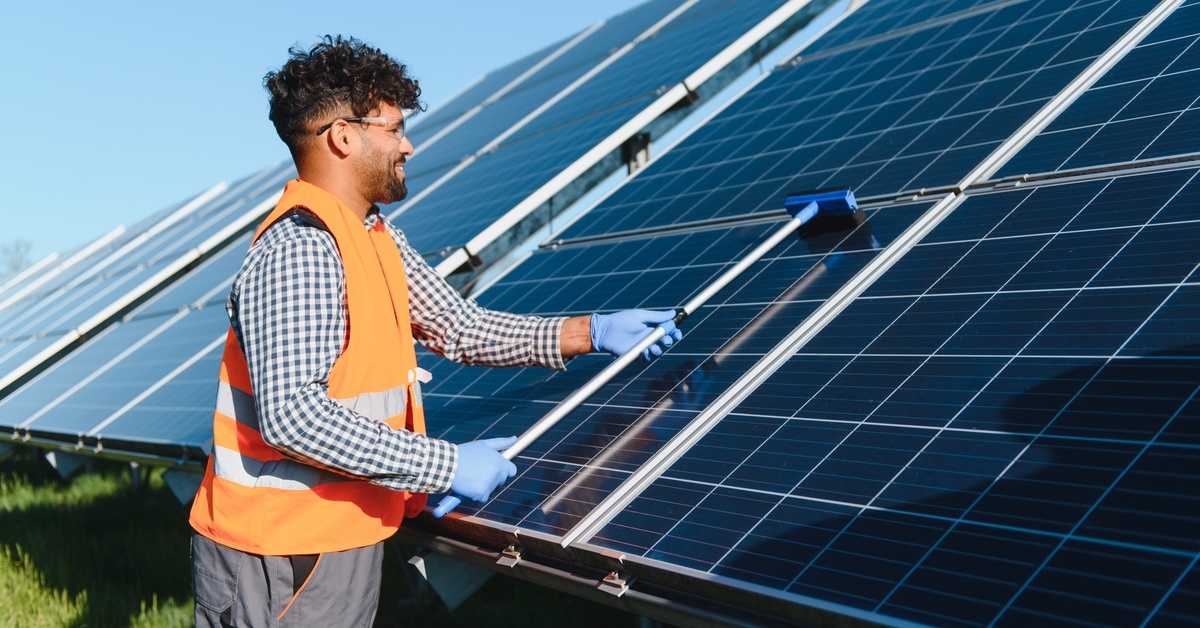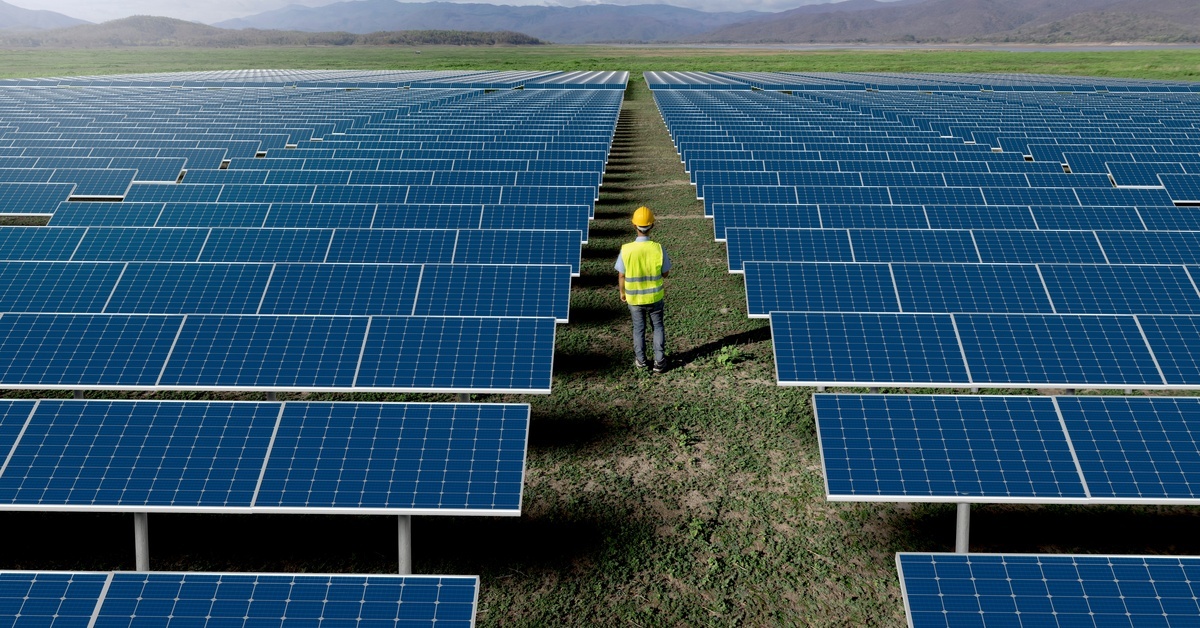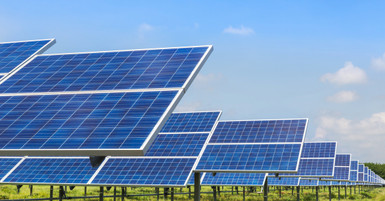Oct 7th 2025
8 Tips for Solar Panel Maintenance and Cleaning
Your solar energy systems represent a significant investment in sustainable power generation. To ensure these assets deliver maximum returns and operate at peak efficiency for their entire lifespan, a strategic maintenance plan is essential. Regular cleaning and upkeep not only boost energy output but also mitigate long-term risks, safeguarding your revenue streams and market position.
This guide outlines critical tips for solar panel maintenance and cleaning, tailored for enterprise-level operations. Implementing these practices will help your organization optimize performance, ensure compliance, and drive sustainable expansion.
1. Implement a Routine Inspection Schedule
Systematic inspections are the foundation of any effective solar maintenance strategy. Establishing a regular schedule allows your teams to proactively identify and address potential issues before they escalate into costly problems that impact energy production.
Your team should inspect the panels for physical damage, including cracks, chips, or delamination. Severe weather and mishandling during installation can cause this damage, compromising both safety and performance.
Dust, dirt, and other naturally occurring debris can build up on the panels and reduce solar absorption over time. While rain provides some cleaning, it is insufficient, especially in arid and industrial regions.
A quarterly inspection schedule is a robust starting point for most commercial installations. However, facilities in areas with high levels of dust, pollution, or extreme weather may require more frequent checks.
2. Monitor Performance Data Continuously
Engineers equip modern solar arrays with sophisticated monitoring systems that provide real-time performance data. Leveraging this technology is crucial for identifying subtle drops in efficiency that may not be visible during a physical inspection. A sudden or gradual decline in a string’s output often signals an underlying issue, such as soiling, shading, or a malfunctioning component.
By analyzing production data, you can:
- Pinpoint underperforming panels or strings for targeted maintenance.
- Schedule cleaning based on actual performance loss rather than a fixed calendar.
- Detect inverter faults or grid issues promptly.
- Forecast energy production more accurately for financial planning and reporting.
Integrating this data with a Computerized Maintenance Management System (CMMS) can automate work orders and streamline your entire maintenance workflow, ensuring a swift response to any performance anomalies.

3. Prioritize Professional Cleaning Services
While it might seem cost-effective to handle cleaning in-house, the risks often outweigh the benefits for large-scale operations. Improper cleaning techniques, such as using harsh chemicals or abrasive tools, can scratch the anti-reflective coating on the panels, permanently reducing their efficiency. Furthermore, working at height and near electrical equipment poses significant safety risks.
Professional solar panel cleaning companies offer several advantages, including specialized equipment and efficient services. They use industry-approved tools, such as soft-bristle brushes and deionized water systems, which clean effectively without leaving mineral deposits or causing damage.
Professionals can also clean large arrays quickly and effectively, minimizing downtime and labor costs associated with managing an in-house team. With their services, you can keep your panels clean without having to worry about staff training.
4. Manage Vegetation and the Surrounding Environment
Proper environmental management plays a crucial role in ensuring solar panels receive maximum sun exposure, thereby optimizing energy generation and improving efficiency. One important aspect of this is developing a comprehensive vegetation management plan.
Regular maintenance should include trimming trees and shrubs near the solar array to prevent them from casting shadows on the panels. Overgrown vegetation can significantly reduce the performance of solar systems by blocking sunlight, especially during peak sun hours. Additionally, controlling weed growth around and underneath ground-mounted systems is essential. This practice not only prevents shading but also mitigates potential fire hazards.
When planning new installations, it is equally important to consider the long-term growth patterns of nearby vegetation. By accounting for how trees or plants may grow over time, businesses can avoid future issues that could compromise the efficiency and productivity of the solar array. Proactive vegetation management ultimately supports sustainable energy generation while minimizing operational risks.
5. Keep Detailed Maintenance Records
Thorough documentation is a critical component of professional asset management. Maintaining detailed records for each solar installation provides invaluable insights for operational planning, financial analysis, and warranty claims.
Your maintenance logs should include dates of all inspections, cleanings, and repairs. This way, you stay organized for insurance or review purposes. Also, ensure there are records of component replacements, including serial numbers and warranty information. This historical data allows you to track trends, calculate the ROI of your maintenance efforts, and provide a complete service history if you ever decide to sell the asset.

6. Understand Your Warranty and Service Agreements
Before undertaking any maintenance, it's essential to understand the terms of your equipment warranties and service agreements. Most manufacturers provide specific guidelines on cleaning and maintenance. Using unapproved methods or third-party services could potentially void your warranty, leaving your organization exposed to significant replacement costs.
You should always confirm:
- The manufacturer's recommended cleaning procedures
- Whether certified technicians must perform maintenance
- The process for filing a warranty claim for a malfunctioning or damaged component
Aligning your maintenance program with warranty requirements is a key risk mitigation strategy.
7. Plan for Seasonal Adjustments
Solar panel performance varies with the seasons. Creating a maintenance plan that accounts for these changes can help you maximize annual energy production.
In autumn, you can plan to clear fallen leaves and debris that can accumulate on panels and cause staining or "hot spots." In regions with snowfall, ensure you have a plan for snow removal. While light snow may melt or slide off, heavy accumulations will halt energy production.
When spring comes around, clean away winter grime and pollen to prepare for the longer, sunnier days ahead. This is also a good time to inspect for any damage caused by winter storms.
8. Train Your On-Site Personnel
While professional services should handle specialized tasks, on-site staff can play a crucial role as the first line of defense. Train your facility managers or maintenance personnel to perform basic visual inspections and recognize common signs of trouble.
This on-site presence ensures that your team spots issues and reports them quickly, enabling a faster response from your specialized maintenance teams and minimizing potential production losses.
Maximize Your Solar Investment
Effective solar panel maintenance and cleaning is not an expense; it is a strategic investment in the long-term performance and profitability of your renewable energy assets. By implementing a comprehensive program that includes routine inspections, performance monitoring, professional cleaning, and meticulous record-keeping, your organization can mitigate risks, ensure compliance, and secure a competitive advantage.
Keep your solar panels functioning properly and within safety guidelines with Get Solar Label’s solar placards. These placards provide essential information for your large-scale solar project, so that technicians, inspectors, and emergency responders can quickly identify the system. Invest in quality placards today.

